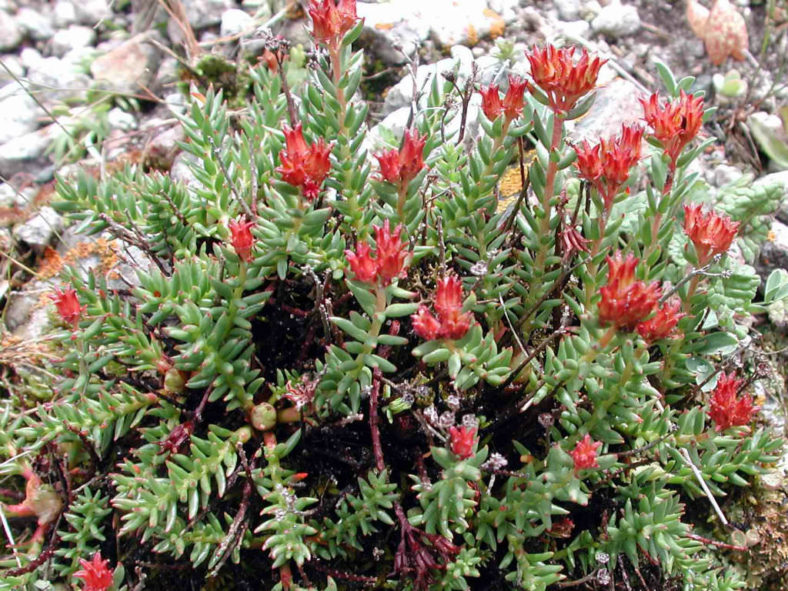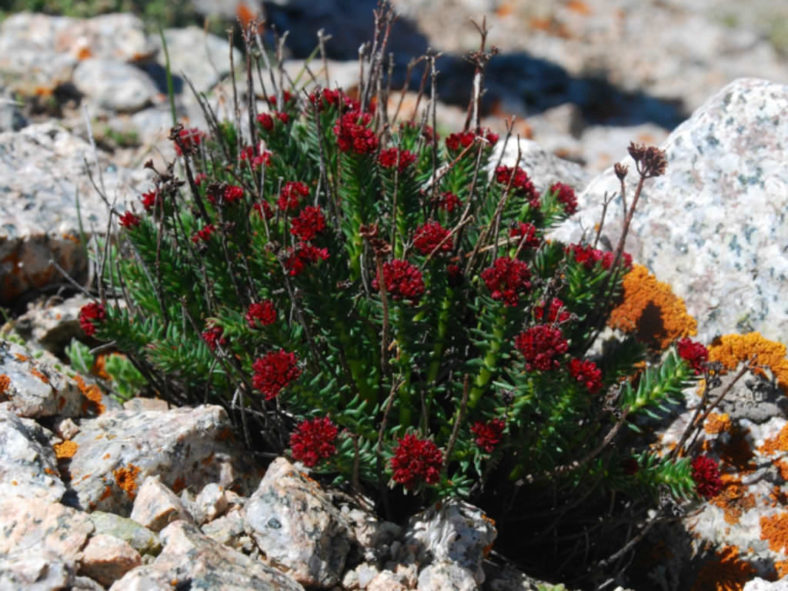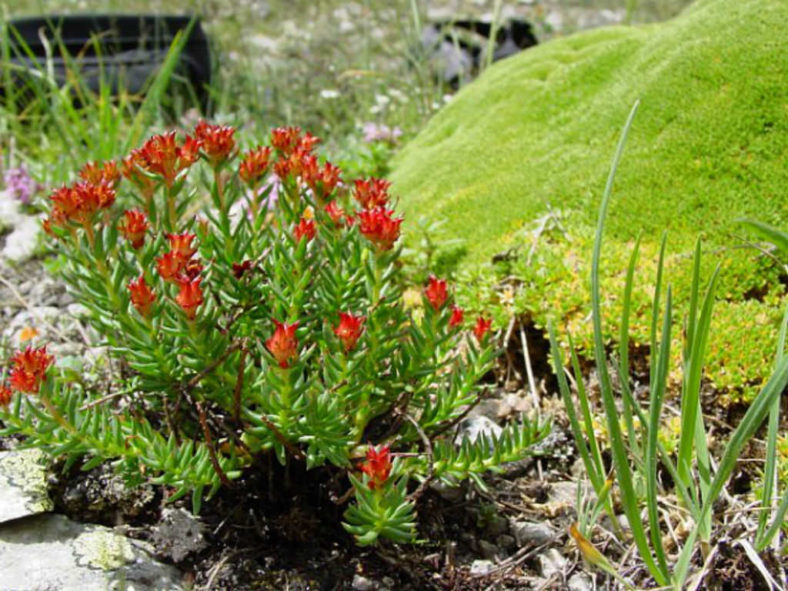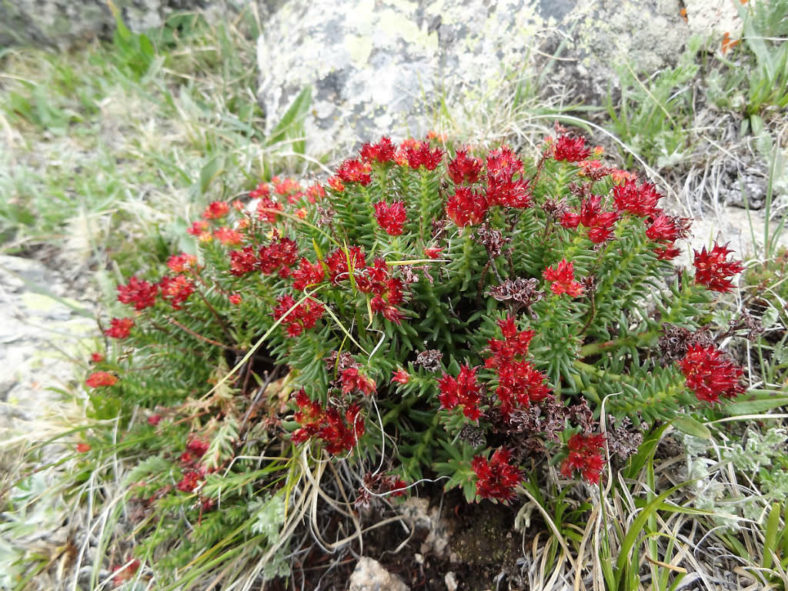Scientific Name
Rhodiola coccinea (Royle) Boriss.
Synonym(s)
Rhodiola coccinea subsp. coccinea, Sedum coccineum, Sedum quadrifidum subsp. coccineum
Scientific Classification
Family: Crassulaceae
Subfamily: Sempervivoideae
Tribe: Umbiliceae
Genus: Rhodiola
Origin
Rhodiola coccinea is native to central Asia, western Siberia, and western and central China. It grows in stony soils and rocks in alpine regions at elevations that range from 8,530 to 16,080 feet (2,600 to 4,900 m).
Description
Rhodiola coccinea is a cushion-forming succulent with thick rhizomes basally tapering into carrot-like roots and 2 to 10 simple flowering stems from each rhizome branch. The flowering stems are erect, brownish, or purplish-red and can grow up to 2 inches (5 cm) tall. Old flowering stems are persistent. The leaves are smooth, green, linear to linear-lanceolate, measuring up to 0.3 inches (0.7 cm) long and 0.06 inches (0.15 cm) wide.
The flowers are unisexual, 4- or 5-merous, red, rarely yellow, and appear in terminal, few-flowered clusters in summer.

Hardiness
USDA hardiness zones 4a to 9b: from −30 °F (−34.4 °C) to 30 °F (−1.1 °C).
How to Grow and Care
When growing Sedums, keep in mind that these plants need very little attention or care. They will thrive in conditions many other plants thrive in but do just as well in less hospitable areas. They are ideal for that part of your yard that gets too much sun or too little water to grow anything else. A common name for Sedum is Stonecrop because many gardeners joke that only stones need less care and live longer.
Sedum is easily planted. Simply laying the plant on the ground where you want it to grow is usually enough to get it started for shorter varieties. They will send out roots from wherever the stem touches the ground and root itself. If you would like to ensure that the plant will start there, you can add a very thin covering of soil over the plant.
You can break off one of the stems for taller varieties and push it into the ground where you want to grow it. The stem will root very easily, and a new plant will be established in a season or two.
Learn more at How to Grow and Care for Sedum.
Links
- Back to genus Rhodiola
- Succupedia: Browse succulents by Scientific Name, Common Name, Genus, Family, USDA Hardiness Zone, Origin, or cacti by Genus
Photo Gallery
Click on a photo to see a larger version.


